2022-10-20
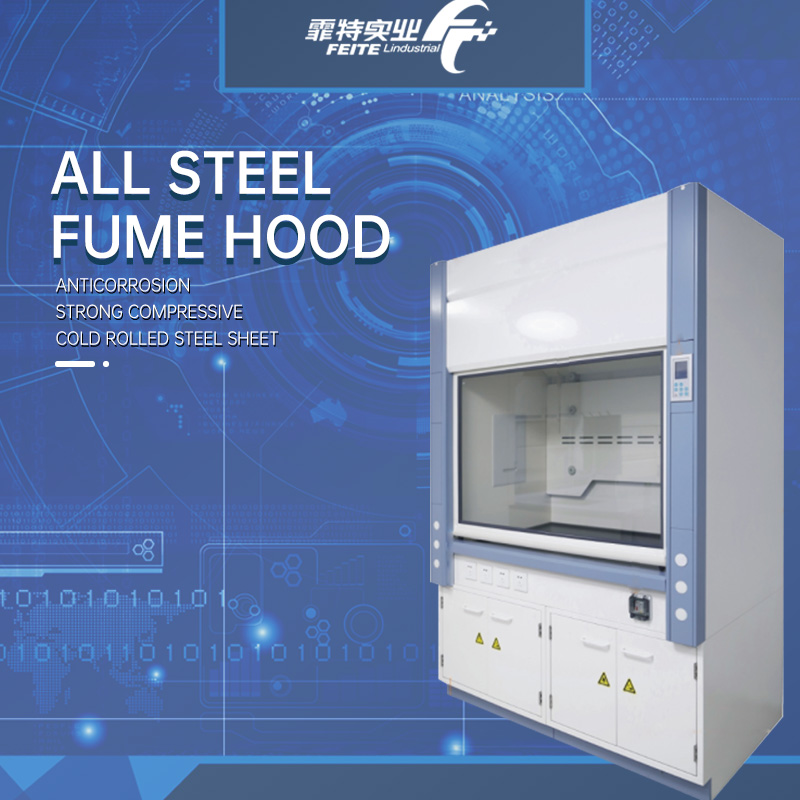
The fume hood is one of the important safety equipment in the laboratory. It is an effective local ventilation method. With proper selection, installation, operation and maintenance, the fume hood can keep its users and other laboratory personnel away from chemical reagents and other harmful substances. At the same time, in the event of a fire or explosion, the fume hood will be able to provide appropriate safety protection, fully considering the characteristics of severe acid and alkali corrosion in the chemical industry. It is resistant to the corrosion of chemical acids and alkalis and organic reagents, and does not contaminate the internal experimental samples. The fume hood ensures the smooth discharge of toxic, harmful and odorous gases, so that the experimental environment can reach the safety effect stipulated by the national standard. The all-steel fume hood is suitable for new process equipment in air-conditioning workshops and ultra-clean workshops. Medicine and other industries, as well as cultural relics protection centers, college laboratories are also widely used.
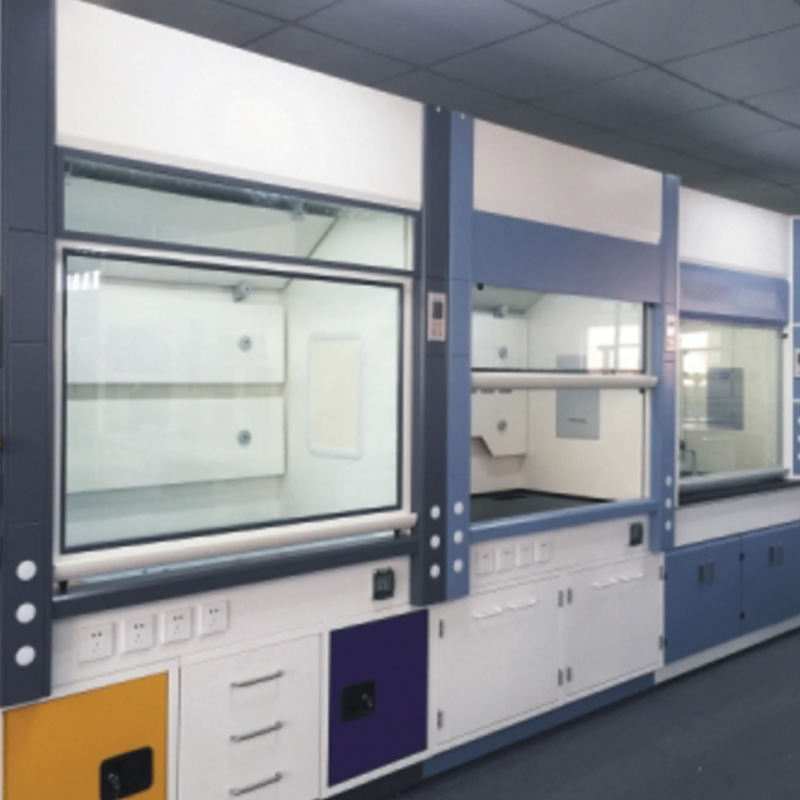
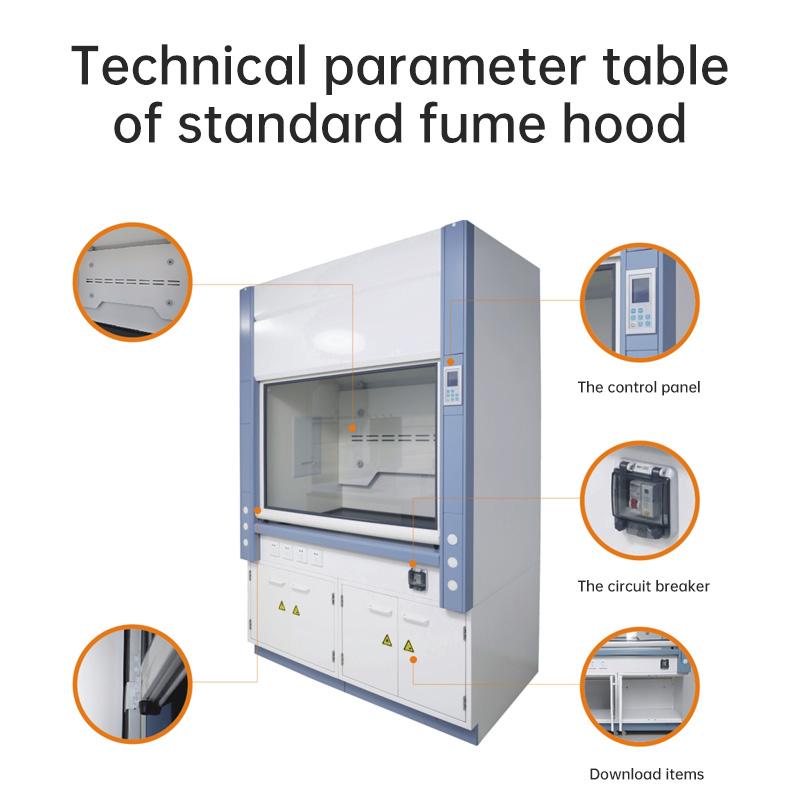
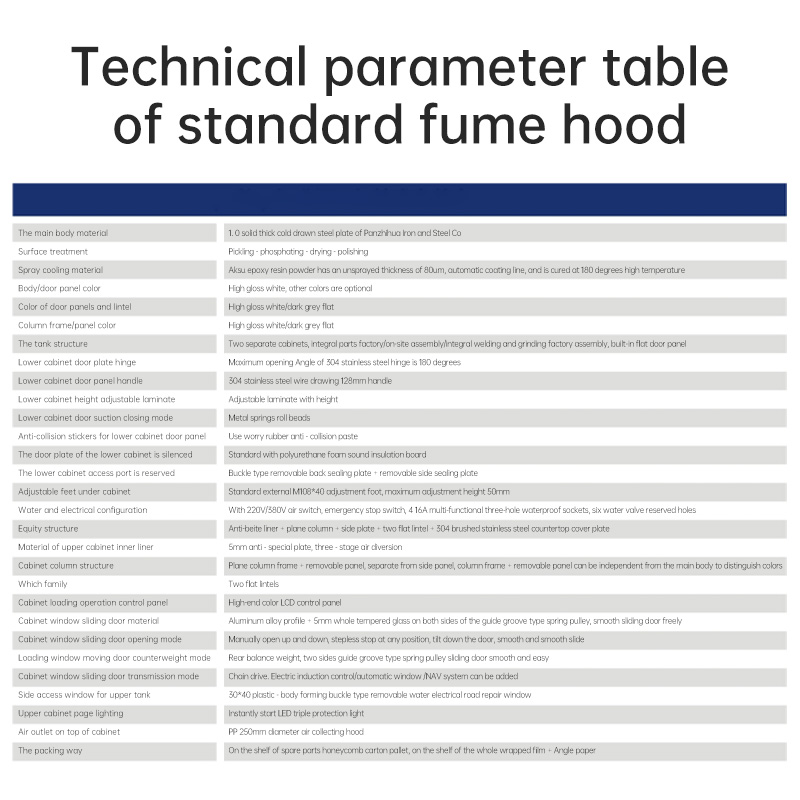
1. Release function
There should be a mechanism to absorb the harmful gas generated inside the fume hood by absorbing the gas outside the hood, so that it is diluted and discharged to the outside. Isolation function: Use a non-sliding glass window in front of the fume hood to separate the inside and outside of the fume hood. Heat resistance and acid and alkali corrosion resistance: some of the fume hoods need to be installed with electric furnaces, and some experiments produce a large amount of toxic and harmful gases such as acid and alkali, which are highly corrosive. The countertop, lining board, side board and selected water nozzles and gas nozzles of the fume hood should have anti-corrosion function. Where strong acids such as sulfuric acid, nitric acid, and hydrofluoric acid are used in the semiconductor industry or in corrosive experiments, it is also required that the overall material of the fume hood must be resistant to acid and alkali, and must be made of stainless steel or PVC.
2. No backflow function
It should have the function that the airflow generated by the exhaust fan inside the fume hood will not reverse the flow of harmful gases into the room from the inside of the fume hood. In order to ensure the realization of this function, it is a good method to connect a fume hood and a ventilator with a single pipe. It cannot be connected with a single pipe, and it is limited to the parallel connection of the same room on the same floor. The ventilator should be installed as much as possible. at the end of the pipe (or at the top of the layer).
3. Supplementary functions
There should be a passage or alternative means for drawing air from outside the fume hood when the harmful gas is discharged.
4. Control wind speed function
In order to prevent harmful gases from escaping in the fume hood, a certain suction speed is required. The factors that determine the intake speed of the fume hood are: the heat generated by the experimental content and the relationship with the number of air changes. Chief among them are the experimental content and the nature of the harmful substances. It is generally stipulated that the general non-toxic pollutants are 0.25-0.38m/s, the toxic or dangerous harmful substances are 0.4-0.5m/s, the highly toxic or a small amount of radioactivity is 0.5-0.6m/s, and the gaseous substances are 0.5-0.6m/s. 0.5m/s, granular material is 1m/s. In order to ensure such a wind speed, the exhaust fan should have the necessary static pressure, that is, the frictional resistance of the air when it passes through the ventilation duct. When determining the wind speed, we must also pay attention to the noise problem. When the air flows in the pipeline, the limit is 7-10m. If it exceeds 10m, noise will be generated. Usually, the noise limit of the laboratory (indoor background noise level) is 70dBA. Increasing the cross-sectional area of the pipeline will cause noise. Reducing the wind speed will also reduce the noise. Considering the cost and construction of the pipeline, the power of the pipeline and the exhaust fan must be carefully selected.
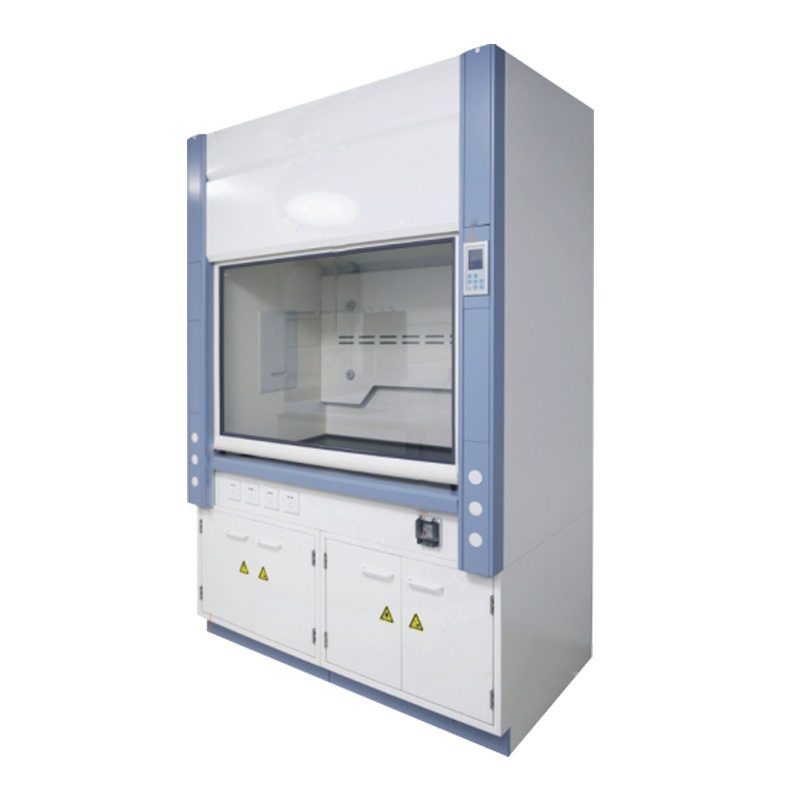
Our main sales: fume hoods, laboratory benches, medicine cabinets, utensil cabinets, gas cylinder cabinets, water basins, faucets, drip racks, eye washers, laboratory equipment, glass products, laboratory instruments, metal products, metal materials (excluding Rare and precious metals), office supplies, purification equipment, gas and liquid separation and purification equipment, medical equipment ((Class I only), chemical reagents (excluding hazardous chemicals), chemical raw materials (excluding hazardous chemicals), research and development, Sales and installation: furniture, teaching equipment, ventilation equipment, special equipment for environmental protection, office equipment, indoor and outdoor decoration projects, etc., and can also be customized according to demand
Contact Person:Peng Jun
Email:2098307050@qq.com
China Southern Power Grid's First Overseas Distribution Network Loss Reduction Pilot Project—the South Cairo, Egypt Project—has Successfully Passed Acceptance
AIX Incubator Secures U.S. SEC Filing Approval and MSB License, Advancing Its Global Compliance Strategy
RWA2035 Global Digital Economy Strategy Summit to Debut in Boao on January 4, 2026
Hacken Releases MEXC’s Audit, Confirms Full Asset Backing and Strengthened Transparency Standards
China’s secret 1938 mission: An all-foreign team braves Japan to bring the Nanjing Massacre to light
CYCJET UV inkjet printers: Injecting lasting and clear marking power into the packaging industry.
©copyright2009-2020Fresh life